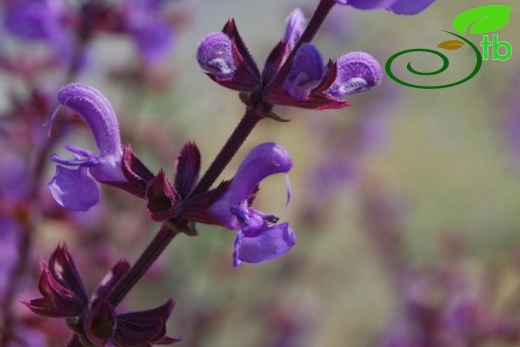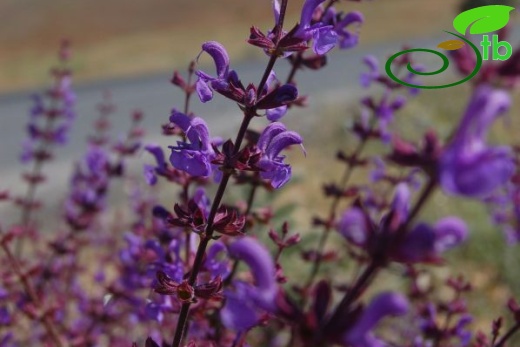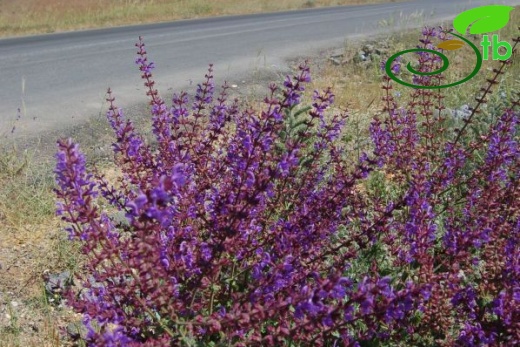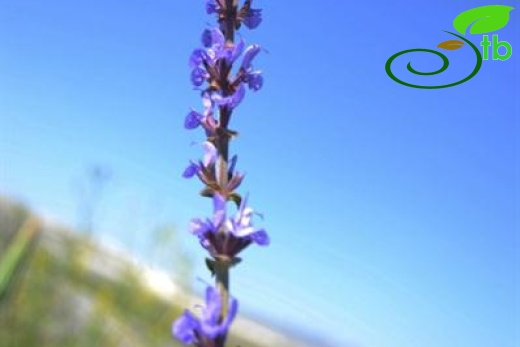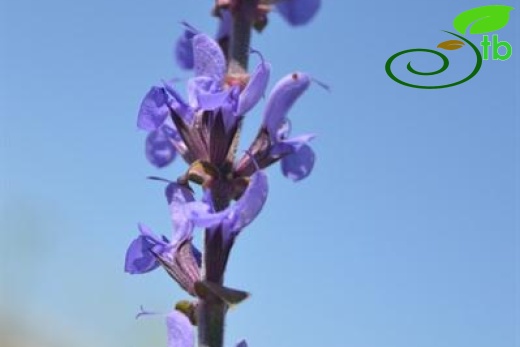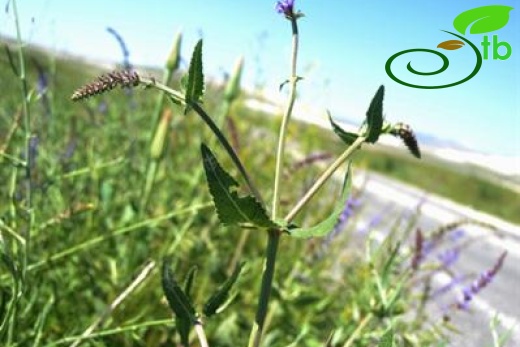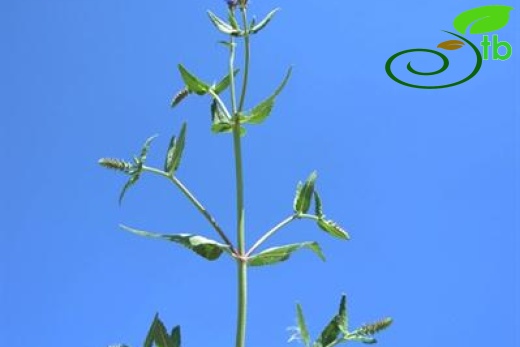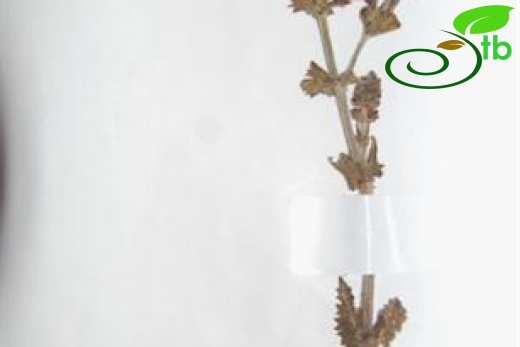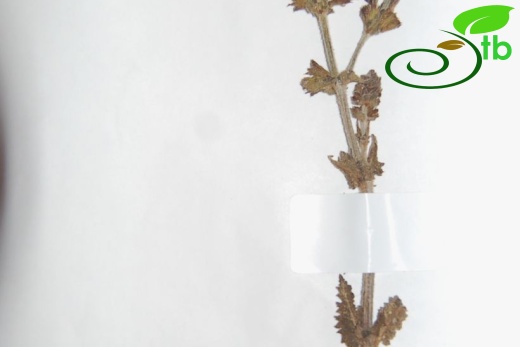Salvia virgata
Salvia virgata
Fatmanaotu
Perennial usually coarse herb. Stems erect, 30-100 cm, much branched above or not, indumentum variable, pilose to tomentose, glandular or eglandular. Leaves simple, distributed over stem or rarely restricted to basal rosettes, ovate-oblong to broadly ovate, 5-30 x 2-15 cm, eglandular-pilose with numerous sessile glands, cordate, rugulose, erose, crenate, serrate to subentire; petiole 1-15 cm. Inflorescence a widely branched panicle with long ± slender secondary branches; verticillasters 2-6-flowered, distant, rarely condensed. Bracts ovate-acuminate, 4-8 x 3.5-6 mm. Pedicels 1-2.5 mm. Calyx ± tubular campanulate, 6-10 mm, to 10-12 mm in fruit with a strongly recurved bisulcate upper lip, glandular or eglandular pilose. Corolla violet-blue to lilac, rarely white, 12-15 mm; tube 7-9 mm, ventricose, not squamulate; upper lip falcate. Stamens B. Nutlets rounded trigonous, ovoid, 2.5 x 2 mm. 2n = 16. Fl. 5-9. Scrub, woodland, meadows, fallow fields, roadsides, etc., s.l.-2300 m.
Crimea, Cyprus, Balkans, Italy, Caucasia, N. Iraq, Iran, Afghanistan, C. Asia. Probably an Ir.-Tur. element, penetrating into Medit, territories.


